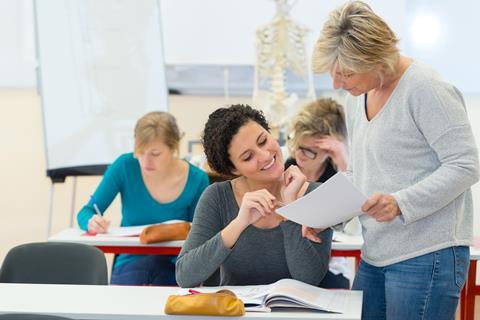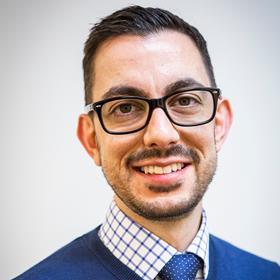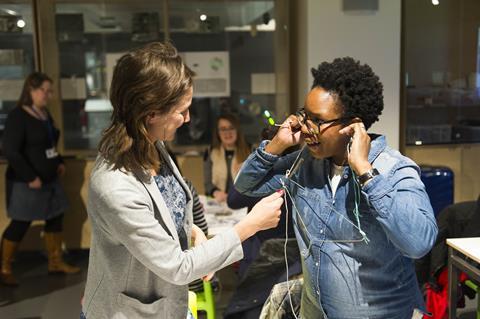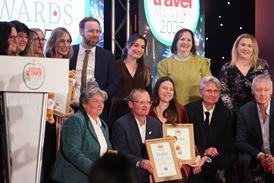The founder of the Teacher Development Trust, David Weston, gives the key ingredients for successful continuing professional development (CPD).

Could you tell us about the Teacher Development Trust and your role?

I was a secondary teacher (maths, physics and science) for ten years and then in 2012 I set up the Teacher Development Trust (TDT). The organisation exists to make sure that schools are able to put on better professional development for teachers so that they can learn more and help children succeed. We describe ourselves as big nerds about Continuing Professional Development (CPD).
We look at everything around professional development and leadership and culture in schools. That includes working with schools and professional development providers as well as working with government and research providers. We’re one of the government’s lead providers for NPQs so we work with a lot of leaders.
What museums and galleries and other external organisations are often very good at is subject specific work, on history or art for example.
You published a report about improving access to CPD for teachers, what were the key recommendations?
The project came about because we know that there has been thinking about what it would look like if there was a stronger entitlement for teacher CPD. The idea was to essentially say what sort of professional development should be funded by the government and how it would be delivered.

We interviewed lots of teachers, school leaders, various policy-makers and researchers and tried to understand what the pressures were and what the challenges were and what people wanted.
We said that the government should update its standard for teacher professional development. We said there should be innovation in this space, particularly in specific subjects and topics. We said schools should get more money to allocate for professional development, to be flexibly used to provide courses, cover or travel costs.
Once you have got a great context, a great learner, great expertise and enough time, those are the key ingredients for great professional development.
We said that we don’t think there should be a fixed number of hours that people have to log each year because we don’t want it to become a box ticking exercise but we feel there should be more attention paid to what individual teachers say they need because at the moment professional development is pretty much decided by school leaders.
What is your experience of schools using external providers like museums and galleries for CPD?
It can be very variable. What museums and galleries and other external organisations are often very good at is subject specific work, on history or art for example. Sometimes that can be great for teachers learning about these subjects but what it also requires is helping the teachers understand what they will see in the classroom – how will children learn this, where they might have trouble, how you will deal with this and integrating everything from the subject knowledge and how it works out there to how it works in here and all the way in between.

Teachers don’t have time in the lesson, or in planning, to make that leap themselves. Some providers do that brilliantly and others less so. Some providers also understand that it’s very hard to do this as a one-off so even if there might only be one formal session, they might provide tools to the school where before staff go on the course, maybe they have some materials to read and perhaps there are exercises in the session where staff bring challenges from their own school, and then there is follow up work too.
Schools should get more money to allocate for professional development, to be flexibly used to provide courses, cover or travel costs.
It requires teachers and school leaders to think carefully, what sort of professional development do my staff need and maybe we can be a bit challenging about what we want from a provider.
How can senior school leaders reassess their CPD for staff?
The first thing is to start reading and thinking. Have a look at the free resources on the Teacher Development Trust website. Start to get a sense of what schools are doing. It can be a useful activity to speak to staff and ask them about a time when they think they have been learning effectively in this school or in your career. That can be helpful because it gets people to think about their learning. Or maybe you can go to another school an ask the questions there because it will facilitate interesting conversations.

What does good CPD look like to you?
- You need a member of staff, often a teacher or teaching assistant, who has got time to engage and who knows the difference they’re trying to make and who has support from people around them.
- It needs to be done in a space where you have time to learn and people are thinking about your workload. Maybe you have some protected time for it.
- It needs to be some expert outside, whether it’s a course, a book or a programme of activity who understands how to adapt the course for you, can support you along the way and also challenge you.
- Once you have got a great context, a great learner, great expertise and enough time, those are the key ingredients for great professional development.
Did you have good CPD as a teacher?
It was mixed. I had some incredible opportunity and some where I didn’t feel believed in and I didn’t get what I needed at the right time.
I had some lovely days where I went and had a great time and then I forgot about it until about three years later when I found the files under my desk. I had some sessions of intense learning but I wasn’t really doing anything with it, maybe it wasn’t the best ideas.
Find out more about the Teacher Development Trust by clicking here.











No comments yet